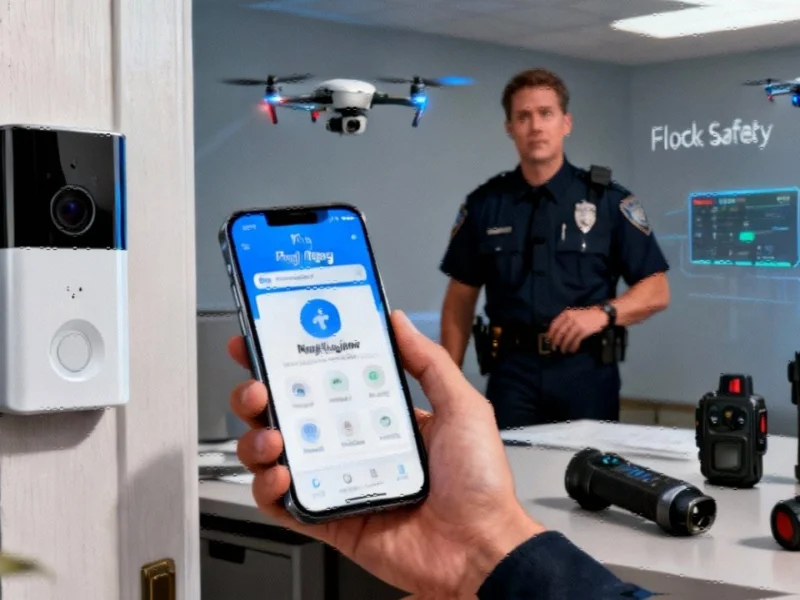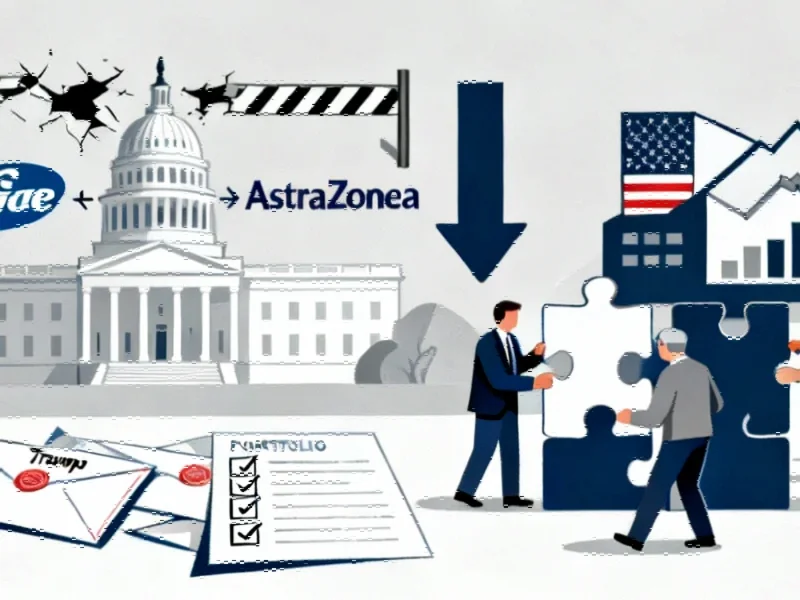Note: Featured image is for illustrative purposes only and does not represent any specific product, service, or entity mentioned in this article.
Ring’s Surveillance Revival Through Flock Safety and Axon Partnerships
Amazon’s Ring division has entered into significant partnerships with Flock Safety and Axon that effectively restore law enforcement’s ability to request footage from homeowners’ security cameras—a capability the company had previously scaled back less than two years ago. This strategic move represents a substantial expansion of Ring’s Community Requests feature within its Neighbors app, creating what privacy advocates describe as an increasingly integrated surveillance network.
The partnership with Flock Safety, a police technology company specializing in surveillance equipment including license-plate reading systems and drones, comes just weeks after Ring unveiled its new 2025 product lineup. This collaboration follows Ring’s earlier partnership with Axon, formerly known as Taser International, which develops tools for police and military applications. Together, these alliances signal Amazon’s commitment to deepening relationships with companies that have established ties to police departments, ICE, the Secret Service, and military branches.
How Community Requests Work in Practice
According to Ring’s documentation, the Community Requests process begins when an agency verified through Axon Evidence submits a request specifying a location, timeframe, and investigation details. The request appears publicly in the Neighbors feed for users within a half-square-mile radius of the incident location. Ring emphasizes that users maintain complete control over their responses.
“If you ignore the request, the agency will not know; your anonymity and videos are protected. The choice is entirely yours,” the company stated in a blog post. Submitted footage goes directly to Axon Evidence for authenticity verification before law enforcement can access it.
In response to inquiries, a Ring representative clarified that “only local public safety agencies can initiate Community Requests,” though questions remain about whether this includes local branches of federal agencies like the FBI or Homeland Security. The company also noted that requesting agencies cannot see who receives these requests or how many Ring users are in a specific area.
Broader Implications for Surveillance and Privacy
These partnerships provide law enforcement with multiple entry points for creating footage requests, potentially expanding surveillance capabilities significantly. Amazon has hinted at adding more partnerships in the future, suggesting this may represent just the beginning of a broader network integration. The requirement that agencies must be verified by both third-party partners and Ring itself adds layers of authorization, though privacy experts question whether these safeguards are sufficient.
The timing of these partnerships coincides with broader industry developments in surveillance technology and public safety approaches. As companies like Ring expand their police collaboration tools, they’re contributing to ongoing debates about the balance between security and privacy in residential communities.
Historical Context and Future Directions
Flock Safety’s journey in the surveillance space dates back to 2018 when the then-nascent startup began installing its own cameras in neighborhoods to combat crime. The company has since evolved into a comprehensive police technology provider. Ring’s path has been similarly transformative, moving from a standalone doorbell camera company to an integrated component of Amazon’s smart home ecosystem.
These surveillance expansions occur alongside other recent technology initiatives focused on security and monitoring. As detailed in this comprehensive analysis, the implications for personal privacy and police access are significant and evolving.
The surveillance technology landscape continues to develop rapidly, with companies exploring new applications and partnerships. These related innovations in security and monitoring technologies reflect broader trends toward integrated systems that span both public and private spheres.
As Ring expands its surveillance partnerships, the conversation around homeowner privacy, police access to private camera footage, and the appropriate boundaries for corporate-law enforcement collaboration continues to evolve. The company maintains that its systems include sufficient safeguards, while critics warn of potential privacy erosion through these increasingly integrated networks.
This article aggregates information from publicly available sources. All trademarks and copyrights belong to their respective owners.



